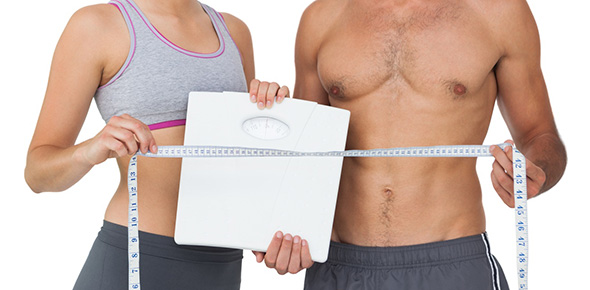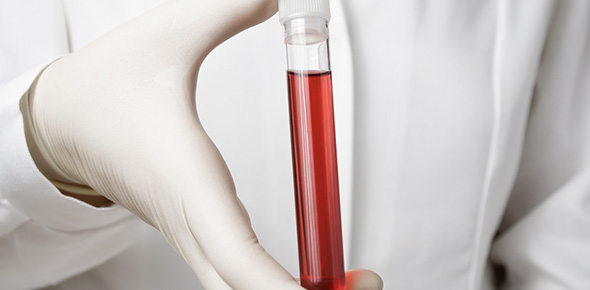Related Flashcards
Cards In This Set
| Front | Back |
|
3 lung volumes that can'T be measured by spirometry....
Define them and explain why |
*These are RV(Residual Volume),FRC(Functional Residual capacity),TLC(Total Lung capacity).Key to understand all of these is understanding of WHY RV can't be measured and that is pretty simple, because Spirmotery measures how much air you can EXhale/INhale and how fast this processes can carry out, however it can NEVER exactly tell how much air is LEFT inside the lungs and remember that Residual Volume is the amount of air left in the lungs after MAXIMAL expiration.*Then just remember that RV is a component of FRC and TLC, or break down them too and it will make sense, look FRC is basically how much air is left int he lung after NORMAL expiration.(So basically residual volume that is there even with MAXIMAL expiratio+ Amount of air that can be breathed out AFTER Normal expiration which is known as ERV, so remember FRC=RV+ERV) , TLC basically is amount of gas in Lungs after MAXIMAL INspiration and involves RV,ERV,IRV(How much air you can breath in after NORMAL inspiration),TV(air that moves in to the lungs with quiet inspiration), so as you see TLC involves RV, so it is obvious that you can't calculate it with spirometry....Also you can think of TLC as The sum of FRC(RV+ERV) and Inspiratory Capacity(TV+IRV), because remember that TLC=RV+ERV+TV+IRV=FRC( same as:RV+ERV)+IC(same as :TV+IRV), so once again FRC can't be measured by spirometry thus TLC can't me measured by it either...FOR NOW at least Remember RV(Air in the lungs after MAXIMAL expiration),FRC(Volume of gas in the lungs after Normal expiration),TLC(Volume of gas in lungs after Maximal Inspiration) can NOT be measured by spirometry...
|
|
How IRV(inspiratory reserve volume) and TV(Tidal volume) are related?
|
*basically IRV is how much air you can INHALE after you Inhaled the Tidal volume, or in other words air that can be breathed in after normal inspiration(During which TIdal volume of around 500ml enters the lungs), so it is not hard to imagine that Inspiratory Capacity(How much air can be breathed IN after normal exhalation) is the sum of Tidal volume +Inspiratory reserve volume.Note that IRV is on average around 4,3 liters while TV is around 500mL, so on average IC should be around 4,8 L.
|
|
Association between ERV and RV...
|
*Well basically they together make up Functional Residual Capacity(Volume of gas in the lungs after Normal expiration)...it makes perfect sense, look RV is how much air is left in lungs after MAXIMAL expiration, so obviously that air will be there with Normal expiration as well, but with Normal expiration you'd also have additional left overs and that additional volume that stays in lung after Normal expiraiton is ERV(Amount of air that can be still exhaled after normal expiration), so overall TOTAL volume of gas in the lungs after NORMAL expiration would be sum of the air that you can breathe out after normal expiration(ERV) and The amount of air that stays in lungs even after Maximal expiration, so ERV+RV=FRC, and important point is the note that because FRC is made up of RV, it can NOT be measured by spirometry....
|
|
IRV vs IC...
|
*IRV is amount of air that you can breathe in after normal INSPIRATIONvsIC is amount of air that you can breathe in after normal EXPIRATION...IC actually is made up of IRV + TV(Amount of airt that moves in with quiet inspiration)
|
|
ERV vs Vital capacity.....First think on your own
|
*ERV is amount of air that you can blow out after normal EXPIRATION(thus reserve after expiration)vsVital Capacity-Maximum volume of gas that can be expired after Maximum Inspiration...thus it makes sense that VC should be composed of Maximum air that can be Inspired after Normal Inspiraiton(IC)+Amount of air that can be exhaled after normal expiraiton...remember that IC is made up of amount of air that enter the lungs with normal inspiration(TV)+amount of air that can enter lungs after Normal inspiration(IRV), so now we get the HY formula, VC=TV+IRV+ERV.<Note that RV is not needed for calculation of VC so it can be measured by Spirometry.Vital capacity normally is around 4.8 liters and if you add to this around 1,2 liters which is Residual volume you would get Total lung capacity which is usually around 6 liters.
|
|
WHY apex of healthy lung is largest contributor of alveolar dead space?
how can this explain why physiologic dead space increases with V/Q mismatch(Like PE)? |
*Well the thing is that Physiologic dead space is Space that determines basically the Volume of air that doesn't participate in gas exchange, now apices are Most upper parts of lungs and thus blood should overcome more gravitational force to reach them then for lower regions, so when compared to other regions it is Less perfused and with Higher Oxygenation, because the oxygen that enters there from taking in the breath can't properly be exchanged with the venous blood from Pulmonary arteries, because simply less of that deoxygenated blood reaches the Apices, thus LESS of Inspired air participates in gas exchange in the apices of the lungs when compared to Other parts of the lungs, thus apices of the lungs contribute to Physiologic dead space the most...Now thus it makes sense than when you have V/Q defects like PE(when Ventilation is fine but Perfusion-Q is lacking because of the emboli blocking blocking the passage of blood into the space where it is lodged)you would have less volume of inspired air that participates in gas exchange because there is not enough blood supply to exchange it...Now NORMALLY physiologic dead space should be very close to Anatomic deadspace(Conducting zone of respiratory tree that doesn't participate in gas exchange+Small amount of volume that doesn't participate in gas exchange in lung apices), But when Gas exchange is Significantly compromised in RESPIRATORY zone, then Physiologic dead space becomes larger and is called PATHOLOGIC deadspace.
|
|
How can you calculate Physiologic dead space?
|
*It is very easy if you know the concept, look physiologic dead space is basically how much of the Inspired air participates in gas exchange, now remember that during quiet inspiration you inspire volume of air known as TIDAL volume(Around 500ml) so now you got to determine how much of this tidal volume didn't participate in gas exchange and that's easy you look at CO2 concentraiton in Arterial blood and you subtract from that CO2 concentration in the EXPIRED air and then you divide this number by CO2 concentraiton in arterial blood, so Vd=Vt times (PaCo2-PECo2/PaCo2)
|
|
*Concepts to help you understand the difference between Alveolar and minute ventilation...
|
*Basically Minute ventilation is How much volume of gas actually enters your Lung PER minute with quiet respiration so all you do is multiply Tidal volume over Respiratory rate(How much you breathe per minute), while Alveolar ventilation measures actually how Much of that air participates in Gas exchange, so all you got to do here is to subtract Physiologic dead space from the Tidal volume and then multiply that number over Respiratory rate.but all they need to give you is respiratory rate and you should be able to calculate both, because Vt=500 while Vd=150, so Ve=500 x RR while Va=350 xRR
|
|
*What determines combined volumes of Lung and chest wall?
|
*ELASTIC properties of BOTH Chest wall and Lung wall.*Increased elastic recoil means that there is INCREASED tendency of Lungs to collapse INWARD and Increased tendency of Outward Pull of the Chest wall..(it makes sense, think of recoil as ability to return something to "Chilling state", Lung would be normally collapsed without you breathing air into it, while Chest wall would be normally pulled outward, so elastic recoil tries to get back to those states)
|
|
*Compare Outward pull of Chest wall with Inward Collapse of Lung just After Normal expiration?*At the same time what are the values for INTRAPLEURAL pressure?Pressure in the Airway/Alveoli?What happens to PVR?
|
*Remember that Volume of Gas that remains in the lungs Just after NORMAL expiration is known as FVC, at Functional RESIDUAL capacity, Outward pull of chest wall is balanced by Inward Collapse of the lung thus there is NO Net movement.*At Functional Residual Capcaity Intrapleural pressure becomes NEGATIVE to prevent Atelectasis by Keeping the alveoli Open, Pressure in Airway/Alveoli is 0 while Pulmonary Vascular Resistance Decrases.
|
|
What does High deltaV(Change in volume)/deltaP(Change in pressure) ratio tell you about stiffness and COMPLIANCE.How this ratio,Compliance change with NORMAL aging,EMPHYSEMA,Pneumonia,Pulmonary edema,NRDS,Pulmonary Fibrosis.How surfactant affects this ratio?
|
*You should know that Compliance is the change in the VOLUME for given Change in the PRESSURE.<Thus as you Decrease Stiffness you INCREASE compliance...*With Normal aging and Emphysema the Compliance INCREASES and thus the ratio of delta V/deltaP will INCREASE(For same pressure change you get Higher Volume change)...The opposite is true for conditions that increase the stiffness/Decrease the compliance- Conditions like Pulmonary FIBROSIS,ARDS/NRDS,Pneumonia and Pulmonary edema in all of these cases the Compliance decreases and the ratio Decreases too because to get the same Change in the volume you need to develop HIGHER pressure so the ratio of V/P goes down,(Thus We maintain HIGHER POSITIVE pressure for patients with ARDS/NRDS)
|
|
*Increased Temperature(Higher metabolic rate) CL,H,CO(TWO),(2,3 BPG)and Decreased Ph .All favor formation of Taut Form of Hemoglobin, what does that mean?
|
*That means that these factors promote formation of DEOXYhemoglobin(Taut,Tense form) which has LOWER affinity to O2 and thus these factors promote RELEASE of O2 from Hemoglobin to Tissues thus dissociation curve switches to the RIGHT, Now Opposite changes for these factors(like in 2,3BPG) would favor formation of RELAXED form known as OXYHEMOGLOBIN and thus Decrease the Unloading of O2 from Hemoglobin(which now has 300 times more affinity for O2 than deoxyhemoglobin) to the tissues, thus Curve shifts to the LEFT.Note that hemoglobin acts as a H buffer(By combining it wit Bicarbonate) and it is made up of 4 Polypeptides(2alpha+2beta), babies have HBF which instead of 2 Beta has 2 Y and that favors HBF of Fetus to steal O2 from lower affinity Hemoglobin(HBA) of mommy.
Don't confuse Right shift with CO2 with LEFT shift with CO. |
|
*Patient has been given topical pain reliever(local anesthetic), now he develops cyanosis, he has Hypoxia with chocolate-colored blood....You know that the likely substance responsible for these manifestations is also often found in Cough drops .....Now What is this substance and mechanism by which it caused the manifestations?
|
*Substance described in the stem is likely BENZOCAINE(Found it Cough drops,local anethetic), which can cause METHHEMOGLOBINEMIA by OXIDIZING Fe2+ to Fe3+ that's also mechanism by which nitrItes(can be found in Mountain waters) and DAPSONE(patient treated for Leprosy) can cause Methemoglobinemia...Now cyanosis Hypoxia, decreased O2 sat/Content is due to the fact that Methemoglobin can't bind O2 as readily(So Po2 is normal but SaO2 decreases), HOWEVER note that Shift is Still to the LEFT(decreased unloading) because FERRIC heme groups(Fe3+) Impair COOPERATIVITY(More O2 usually >More O2 binding, less O2 binding with MethB>Less O2 binding and less O2 available for Unloading to tissues)Methemoglobin has higher affinity for CYANIDE(can be released from Nitroprusside,found Smoke inhalation victims)thus it removes Cyanide, so in cyanide poisoning we might induce methemoglobinemia artificially(by using nitrites, followed by thiosulfate)Contenital Methemoglobinemia is Autosomal Recessive condition that involves deficiency of Cytochrome B5 REDUCTASE(Normally converts Methb>Hemolgobin)
|
|
*Exposure to Gas Exhaust,Fires,Gas Heaters...FIRST symptom?SaO2 on Co-oximeter vs Pulse Oximeter...Shift of Oxygen Binding curve, why?
|
In these exposures you should start thinking about CO poisoning , FIRST symptom is usually HEADACHE and Dizziness, Cherry-red discoloration of skin is classic but onset is later....*Because CO has 200 times higher affinity for hemoglobin that O2 does, it wins the competition for spots and results in Decreased SaO2 which is NOT detected by Pulse oximeter but is Detected by Co-Oximeter...remember only Co-Oximeter can detect decreased SaO2 with presence of Dyshemoglobins(like MetHb/COHb), because less O2 binds hemoglobin we get Decreased Cooperativity and Decreased O2 available for Unloading of O2 into the tissues, thus OBC is SHIFTED to the LEFT, contrast this with CO2 which shifts the curve to the RIGHT by promotion of O2 dissociation from Hemoglobin....Treat with 100% O2 and hyperbaric O2.(You basically want to increase chances of O2 for winning the binding spots by increasing its concentration, remember Competitive inhibitors can be overcome by increasing substrates Sufficiently high)
|
|
Why Might alkalosis result in Erythrocytosis?
|
*Because During alkalosis Ph goes up(H goes DOWN)>Shift of OBC to the LEFT(Less O2 unloading to tissues>Renal Hypoxia>Synthesis of EPO>Comepnsatory Increase in Erythrocyte synthesis.*Decrease in ANYTHING that would normally shif the curve to the Right, will result in shifting to left(Like DECREASED altitude,Decreased Temperature,Decreased Exercise,Decreased H,Decreased CO2,Decreased 2,3 BPG will all shift curve to LEFT while Increase in all of them would give us Shif to right and more O2 unloading to tissues)Once again don't confuse Decreased CO2 which would switch the curve to the left with DECREASED CO which would switch curve to the right(Increase in each obviously has opposite effects)
|






